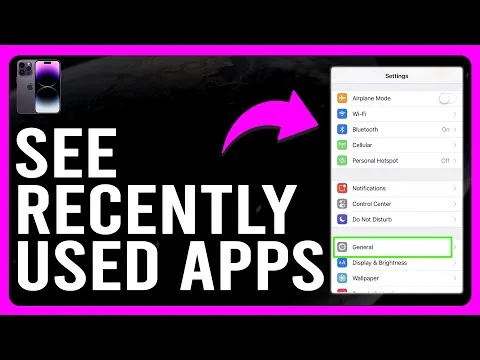Car insurance is essential for all vehicle owners. Not only is it legally required in most places, but it also offers peace of mind, financial protection, and support in case of unexpected events. However, with so many car insurance options available, it can be overwhelming to find the right policy that balances cost and coverage. This guide will help you understand the types of car insurance, essential coverage options, and tips to save on premiums.
What is Car Insurance?
Car insurance is a contract between you and an insurance company that protects you financially in case of an accident or damage to your vehicle. In exchange for regular premium payments, the insurer agrees to cover the costs of repair, replacement, or liability as outlined in your policy. Car insurance policies vary widely in terms of coverage, benefits, and price.
Types of Car Insurance Coverage
When it comes to car insurance, knowing the different types of coverage available is essential. Here’s a breakdown of common car insurance types:
a. Liability Insurance
Liability insurance is legally required in most states. It covers the cost of damages and injuries you may cause to others in an accident. Liability coverage is divided into:
- Bodily Injury Liability: Covers medical expenses for injuries to others.
- Property Damage Liability: Covers repairs for property damaged in an accident.
b. Collision Coverage
Collision coverage pays for the repair or replacement of your car after an accident, regardless of who is at fault. It’s especially useful if you have a new or valuable car.
c. Comprehensive Coverage
This type of coverage protects your car from non-collision incidents such as theft, natural disasters, vandalism, or hitting an animal.
d. Personal Injury Protection (PIP)
PIP, also known as “no-fault insurance,” covers medical expenses for you and your passengers regardless of fault. It may also cover lost wages and rehabilitation costs.
e. Uninsured/Underinsured Motorist Coverage
This coverage protects you if you’re involved in an accident with an uninsured or underinsured driver who cannot cover your damages.
f. Gap Insurance
If you’re leasing or financing a vehicle, gap insurance pays the difference between your car’s value and the balance of your loan if your vehicle is totalled.
How are car insurance premiums calculated?
Several factors influence car insurance premiums, including:
- Driver’s Age and Experience: Younger or less-experienced drivers often pay higher premiums due to a perceived higher risk.
- Location: Living in areas with high crime rates or frequent severe weather can increase premiums.
- Vehicle Type: High-performance or luxury vehicles usually cost more to insure.
- Driving Record: Drivers with clean records tend to pay lower premiums. Accidents, tickets, or DUIs increase costs.
- Coverage Amount: The more coverage you have, the higher the premium will be.
- Credit Score: In some places, credit score affects insurance rates, as lower credit scores may indicate higher risk.
Ways to Save on Car Insurance Premiums
While car insurance is essential, there are ways to reduce your premiums. Here are a few proven tips to help you save:
a. Shop Around and Compare Quotes
Comparing quotes from multiple providers helps you find the best deal. Many online comparison tools make this easy, giving you a clear idea of the average rates for your desired coverage.
b. Opt for a Higher Deductible
Choosing a higher deductible (the amount you pay out of pocket before insurance kicks in) can lower your monthly premium. Just make sure you can afford the deductible in case of an accident.
c. Bundle Your Policies
Many insurers offer discounts if you bundle multiple policies, such as home and auto insurance, with the same provider.
d. Take Advantage of Discounts
Most insurance companies offer various discounts, including:
- Safe driver discounts for clean driving records.
- Low-mileage discounts for those who don’t drive often.
- Good student discounts for young drivers who maintain good grades.
- Military or membership discounts are available for affiliation with certain organizations.
- e. Maintain a Good Credit Score
- If your credit score impacts insurance rates in your area, maintaining a good credit score can lead to lower premiums.
f. Consider Usage-Based Insurance
Some companies offer usage-based insurance that tracks your driving habits through a mobile app or device. Safe driving can result in lower premiums with these policies.
The Importance of Shopping Around
Insurance rates can vary widely between companies for the same level of coverage. Shopping around allows you to find better rates and identify discounts that may be available. In addition, many insurers offer promotional rates for new customers, so exploring options regularly can help you avoid overpaying.
Common Car Insurance Myths Debunked
Several misconceptions about car insurance can lead drivers to make costly mistakes. Let’s debunk a few:
Myth 1: Color of Your Car Affects Your Premium
While red cars are often believed to cost more to insure, insurers don’t actually consider colour. Instead, they focus on the vehicle’s make, model, and safety features.
Myth 2: Minimum Liability Coverage is Enough
Although minimum coverage is cheaper, it might not be sufficient in case of a severe accident. Opting for more than the minimum coverage ensures better financial protection.
Myth 3: Your Rates Stay the Same Once You Choose a Policy
Insurance rates are regularly adjusted based on various factors, including your driving record, location, and even broader changes within the insurance industry. It’s essential to review and compare rates periodically.
Myth 4: Older Cars Don’t Need Comprehensive Coverage
While older cars may not require comprehensive coverage, it depends on the vehicle’s value. Consider the cost of repairs and whether it’s worth having additional coverage for peace of mind.
Conclusion
Car insurance is a crucial component of responsible vehicle ownership, offering financial protection and legal compliance. By understanding the types of coverage available, you can make informed decisions about which options best suit your needs. Shopping around, taking advantage of discounts, and practising safe driving habits can help you save on premiums without compromising on essential protection.
Ultimately, car insurance is about balancing your budget with your need for security on the road. With the right coverage, you can drive confidently, knowing that you’re prepared for the unexpected.









